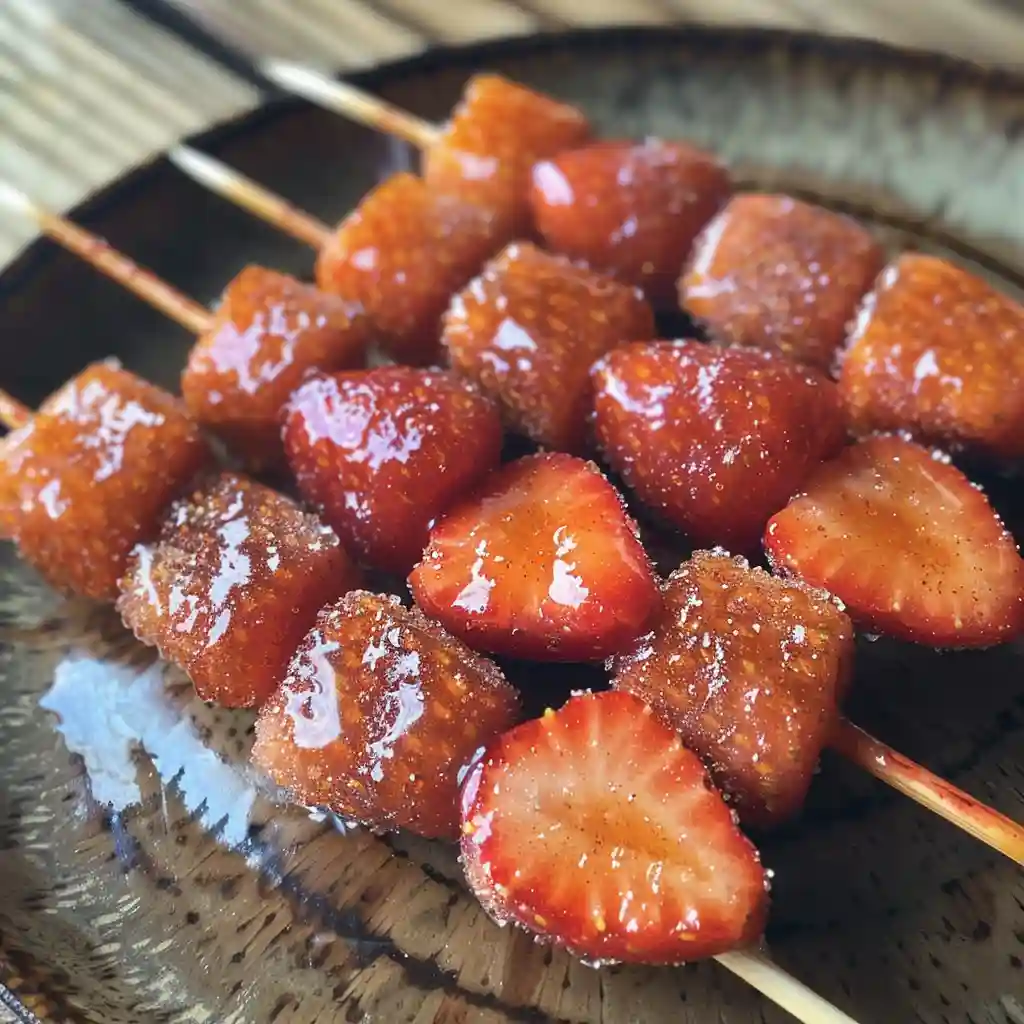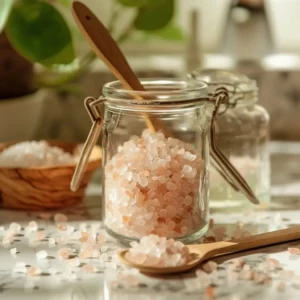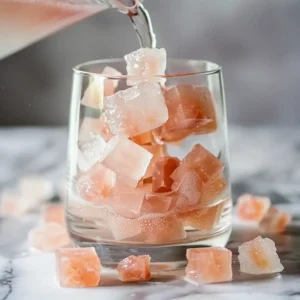If you’ve been anywhere near TikTok or Instagram lately, you’ve probably stumbled across the Tanghulu Challenge. That glossy, crackly fruit on a stick, making that oh-so-satisfying crunch when bitten into—it’s taken the internet by storm. But where did it come from, why is it so popular, and what’s the best way to make it at home?
Hi, I’m Sifaw. I’m not a professional chef, just someone who’s deeply passionate about exploring food and its stories from around the world. I first encountered tanghulu during a cold street market stroll in Beijing years ago. Back then, I didn’t know it would someday become a worldwide phenomenon—and certainly didn’t expect to see it turned into a playful, often hilarious viral challenge online. But here we are.
In this article, I’ll walk you through the story and science of the Tanghulu Challenge, guide you on making your own crunchy creations, explain the tricky syrup technique, and even share a few personal tips I learned the hard way. Whether you’re here for the flavor, the fun, or just to avoid your tanghulu turning into a sticky mess, I’ve got you covered.
Don’t miss our mango version—it’s one of the easiest ways to jump into the challenge: Check out our Mango Tanghulu Recipe
Let’s get started with the heart of it all: what exactly is the Tanghulu Challenge?
Table of Contents
What is the Tanghulu Challenge?
The Rise of Tanghulu on Social Media
The Tanghulu Challenge didn’t start in a culinary school—it began with creators dunking fruit in hot sugar syrup and showing off that iconic crack with a bite. With the help of high-def cameras and ASMR, what was once a traditional Chinese treat turned into a social media sensation. The viral trend caught on quickly because it’s simple to try at home, visually stunning, and—when done right—delicious.
People across platforms started using everything from strawberries to grapes, even pickles (yes, really), trying to get that perfect sugar glass coating. Videos racked up millions of views, and the hashtag #tanghuluchallenge became a playground for experimentation and, sometimes, glorious fails.
What the Tanghulu Challenge Involves
At its core, the challenge is all about making the perfect candied fruit. That means dipping fresh fruit skewers into molten sugar syrup and quickly cooling them to create a hard shell. You then take a bite on camera, hoping for that loud crack—because without it, well, you’re doing it wrong (according to the internet, anyway).
But there’s more to it than just aesthetics. The syrup has to be cooked to just the right temperature, the fruit has to be dry, and timing is everything. Mess up one step, and you could end up with sticky strings or soggy candy. No pressure, right?
Up next, let’s dig into where it all started: the centuries-old tradition behind this shiny little fruit treat.
The Cultural Roots of Tanghulu
The Tanghulu Story: From Ancient China to TikTok
Before it became the viral Tanghulu Challenge, tanghulu was a beloved street snack with deep cultural roots and a history stretching back centuries. Originating in Northern China, tanghulu (糖葫芦) was traditionally made with hawthorn berries dipped in a hardened sugar glaze. It’s been sold by street vendors in Beijing since at least the Song Dynasty—more than 800 years ago.
According to legend, a royal concubine once fell ill and refused to eat. A court doctor recommended hawthorn berries coated in sugar syrup to improve her appetite. The remedy worked, and the sweet creation quickly spread across the empire. Over time, tanghulu became a nostalgic winter treat, its brilliant red shell symbolizing joy and luck during Chinese New Year celebrations.
As someone who first tasted tanghulu during a trip to a Beijing night market, I’ll never forget that first crisp bite—cold air, sweet crunch, and a moment of pure childlike wonder. That experience stuck with me, and now, seeing the Tanghulu Challenge bring it to kitchens worldwide makes it feel like an old friend has gone global.
Symbolism and Historical Value in Chinese Traditions
In Chinese tradition, sweets are more than snacks—they’re messengers of meaning. The glossy sugar shell on tanghulu represents prosperity and success, while the stick holding several fruits symbolizes unity and harmony among families. These symbolic qualities made tanghulu a staple at temple fairs and holiday festivals.
Now fast-forward to today, where the Tanghulu Challenge has taken over TikTok and Instagram. While many people are drawn to the ASMR crunch or shiny visuals, understanding its cultural origin adds a whole new layer of respect. This isn’t just candy—it’s heritage wrapped in sugar.
One of the things I love most about the Tanghulu Challenge is how it bridges the past and present. A treat that once warmed cold Beijing nights now lights up screens around the world, from American kitchens to European food trucks. The challenge may be modern, but the spirit behind it—joy, sharing, tradition—is timeless.
Print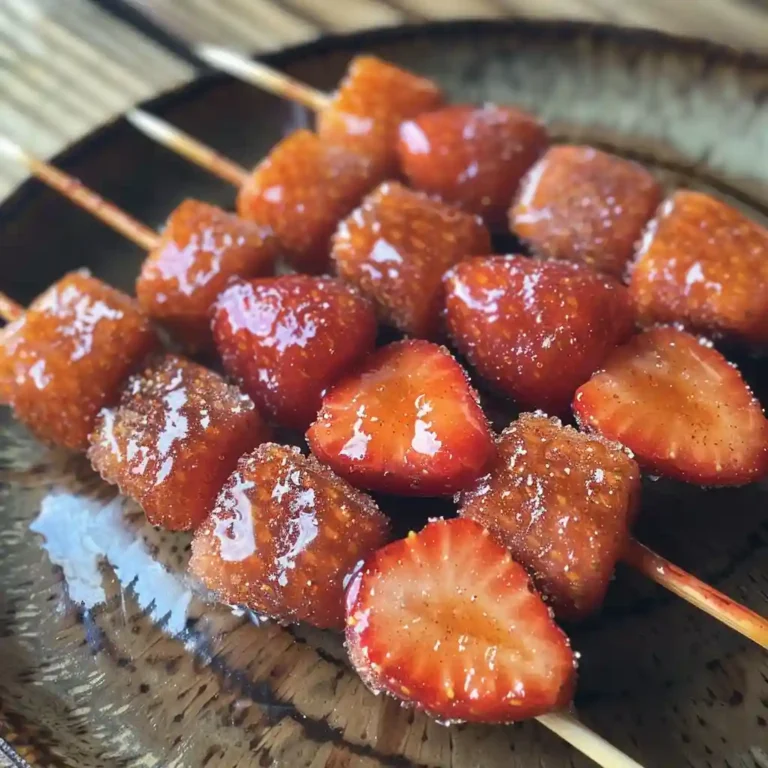
Tanghulu Challenge: The Viral Craze That’s Sweeter Than You Think
That glossy, crackly fruit on a stick that’s taken social media by storm—here’s how to make Tanghulu at home and avoid common pitfalls while joining the viral #tanghuluchallenge.
- Total Time: 25 minutes
- Yield: 4 skewers
Ingredients
- 1–2 cups fresh fruit (strawberries, grapes, mango chunks, kiwi slices)
- 1 cup white granulated sugar
- ½ cup water
- 1 tsp lemon juice (optional)
Instructions
- Wash and thoroughly dry the fruit with paper towels.
- Skewer 2–3 pieces of uniformly-sized fruit per bamboo stick.
- In a medium saucepan, combine sugar, water, and lemon juice (if using). Do not stir. Bring to a boil and cook until syrup reaches 300°F (hard crack stage), using a candy thermometer.
- Remove from heat. Quickly dip each fruit skewer into the syrup and swirl to coat.
- Immediately place coated fruit into a prepared ice water bath for 20–30 seconds.
- Place on parchment paper or silicone mat to dry completely. Serve within a few hours.
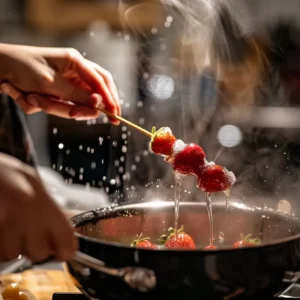
Notes
Ensure fruit is completely dry before dipping. Use a candy thermometer for best results and never stir the syrup while cooking to avoid crystallization.
- Prep Time: 10 minutes
- Cook Time: 15 minutes
- Category: Dessert
- Method: No-Bake
- Cuisine: Asian-Inspired
Nutrition
- Serving Size: 1 skewer
- Calories: 120
- Sugar: 24g
- Sodium: 0mg
- Fat: 0g
- Saturated Fat: 0g
- Unsaturated Fat: 0g
- Trans Fat: 0g
- Carbohydrates: 30g
- Fiber: 1g
- Protein: 0g
- Cholesterol: 0mg
PART 3: How to Make Tanghulu at Home for the Challenge
Essential Ingredients and Tools for Tanghulu
Making tanghulu at home for the Tanghulu Challenge isn’t as complicated as it looks, but it does require patience and precision. During my first attempt at this viral challenge, I underestimated how quickly sugar can shift from golden perfection to burnt disaster. If you’re getting ready to join the Tanghulu Challenge, here’s what you’ll need to do it right:
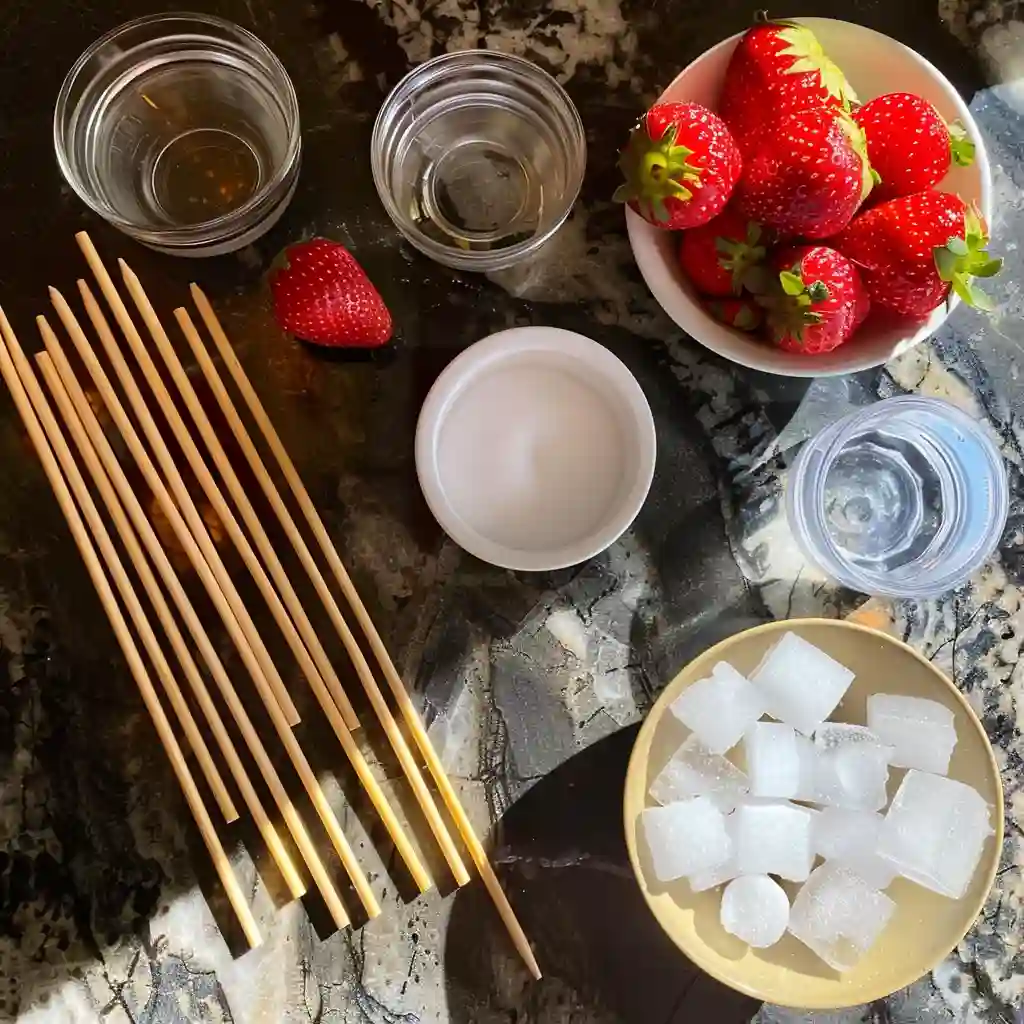
Ingredients:
| Ingredient | Quantity |
|---|---|
| Fresh fruit | 1–2 cups |
| White granulated sugar | 1 cup |
| Water | ½ cup |
| Lemon juice (optional, prevents crystallization) | 1 tsp |
Recommended Fruits for Tanghulu:
- Strawberries (always a safe bet)
- Red grapes
- Mango chunks
- Kiwi slices (lightly dried for best coating)
Essential Tools:
- Bamboo skewers
- Candy thermometer (non-negotiable)
- Silicone mat or parchment paper
- Ice water bath
- Medium saucepan
I can’t stress this enough: the candy thermometer is your best friend. Skipping it during my first Tanghulu Challenge attempt resulted in a gritty mess that refused to harden. Since then, I never attempt tanghulu without it.
Step-by-Step Instructions for Beginners
1. Wash and Dry the Fruit Thoroughly
Moisture is your #1 enemy in the Tanghulu Challenge. Be sure to pat each fruit completely dry using paper towels, or your sugar syrup won’t stick.
2. Skewer the Fruit
Add 2–3 pieces of fruit per skewer. Uniform sizing helps ensure an even sugar coat and clean finish.
3. Make the Sugar Syrup
Combine sugar and water in a saucepan. Add lemon juice if desired, then bring to a boil without stirring. Cook the syrup until it reaches 300°F—this is the hard crack stage crucial for that glassy crunch the Tanghulu Challenge is known for.
4. Dip the Fruit
Remove the pan from heat. Dip each skewer into the syrup quickly and swirl for an even coat. You only get a short window before the syrup thickens!
5. Chill in Ice Bath
Immediately dip the coated skewers into an ice bath for 20–30 seconds. This sets the candy shell and creates the iconic crackle you’ve seen in countless Tanghulu Challenge videos.
6. Dry and Serve
Lay the skewers on a silicone mat or parchment paper. Let them cool completely before serving. For best results, eat them within a few hours—humidity can soften the sugar shell over time.
Why You Shouldn’t Stir the Sugar Syrup
Understanding the Science Behind Sugar Crystallization
One of the most common mistakes people make during the Tanghulu Challenge is stirring the sugar syrup while it cooks. Trust me, I made that exact mistake on my second attempt—excited, nervous, and a little impatient. I grabbed a spoon and gave it a good stir. Minutes later, my beautiful clear syrup turned into a cloudy, gritty mess.
So why exactly can’t you stir tanghulu syrup?
When sugar dissolves in water and begins heating, it forms a delicate solution. Stirring disrupts the molecular alignment of the sugar and introduces air, which encourages crystallization. Even worse, if any undissolved sugar crystals from the side of the pot fall back in, it can trigger a chain reaction, turning your syrup into a grainy, unusable sludge.
For perfect tanghulu, you need a clean, undisturbed boil—no spoons, no poking, no swirling.
Here’s a trick I use: once the sugar is fully dissolved, I carefully brush down the inner sides of the pot with a wet pastry brush to keep rogue crystals from forming. Then I step back and let the thermometer do its job.
Tips to Prevent Grainy or Failed Syrup
If you want to increase your chances of tanghulu success, follow these tried-and-true tips:
- Use a candy thermometer to monitor the syrup temperature—you’re aiming for 300°F (hard crack stage).
- Avoid stirring at all costs once the sugar has dissolved.
- Add lemon juice (or light corn syrup) to help prevent crystallization.
- Use a heavy-bottomed pot to ensure even heat distribution.
- Clean down the sides of your saucepan with a wet pastry brush early on.
And one last piece of advice: be patient. Sugar syrup is a delicate process. Rushing it usually means restarting the whole batch.
Mastering the Ice Bath Technique
How Long Should You Chill Tanghulu?
After you dip your fruit skewers in hot sugar syrup, the next step in the Tanghulu Challenge is the ice bath. But how long should you leave them in? When I first tried it, I kept them in too long—and the sugar shell cracked and started to melt away.
The sweet spot (pun intended)? 20 to 30 seconds.
That’s just enough time for the sugar to harden into a crisp, glassy shell without moisture seeping in and ruining the crunch. Any longer and the fruit begins to release water, especially berries or high-water-content fruits like grapes and kiwi, which causes the sugar to dissolve or become sticky.
Here’s how I do it:
- Prepare a large bowl with ice water, not just cold water.
- Dip your freshly glazed skewers immediately after coating.
- Submerge only the candied part, and rotate gently for even cooling.
The result? That satisfying, glass-like crack when you bite in—just like the pros on TikTok.
What Happens If You Skip the Ice Bath?
Skipping the ice bath is like skipping the freezer in an ice cream recipe—it just won’t work right. Without a proper chill:
- The syrup might stay tacky or soft
- The fruit won’t have that signature crisp shell
- The sugar can slump, pool, or even slide right off the skewer
I’ve learned that the ice bath not only speeds up hardening but also locks the sugar in place, giving tanghulu its addictive texture.
Popular Tanghulu Variations to Try
Mango, Strawberry, and Grape Tanghulu
When it comes to the Tanghulu Challenge, strawberries are the crowd favorite—but they’re just the beginning. If you’re like me and enjoy playing with flavor and texture, experimenting with different fruits can be both fun and delicious. Here are my top tried-and-true variations:
- Strawberries: The classic. Their shape and structure make them ideal for skewering and coating. They hold the sugar well and deliver a dramatic crunch.
- Red Grapes: These offer bite-sized tanghulu with a juicy pop. I once brought a platter of grape tanghulu to a family picnic—they vanished in minutes.
- Mango Chunks: Smooth, tropical sweetness with a hint of tang. They can be trickier to skewer, but the flavor is unbeatable.
Try it yourself with our full Mango Tanghulu recipe:
Tips for Using Different Fruits:
| Fruit | Prep Tip | Crunch Factor |
|---|---|---|
| Strawberries | Pat dry well, leave stems on if desired | |
| Grapes | Use seedless, dry fully | |
| Mango | Cube evenly, avoid soft edges | |
| Kiwi | Peel and dry slices gently | |
| Pineapple | Firm chunks only |
One tip from my kitchen: whatever fruit you use, make sure it’s cold and dry. This helps the sugar shell harden faster and more evenly.
Creative Combinations Seen in the Tanghulu Challenge
What makes the Tanghulu Challenge so fun is that no two creators do it the same way. Some go wild with:
- Rainbow fruit skewers combining strawberries, grapes, blueberries, and even tangerine slices.
- Drizzle toppings like dark chocolate or white chocolate once the sugar coating sets.
- Crushed candy sprinkles for a party vibe (add immediately after dipping in syrup).
- Sweet-savory combos—I saw someone dip cherry tomatoes and basil leaves in syrup. Not my thing, but hey, creativity counts!
For a more dessert-style twist, don’t miss our Chocolate Madeleines for a richer pairing with fruity tanghulu:
Common Mistakes in the Tanghulu Challenge
Why Your Tanghulu Isn’t Crunchy
Let’s be real—perfecting the Tanghulu Challenge on your very first attempt? It’s not likely. I definitely didn’t. My first try ended in a syrupy disaster. The sugar coating never hardened, and instead of a satisfying crunch, I got a sticky mess dripping like honey.
So what went wrong? If your Tanghulu Challenge results look more like caramel sauce than candied fruit, these might be the culprits:
1. Syrup Didn’t Reach Hard Crack Stage (300°F)
Without hitting that crucial 300°F mark, your sugar won’t harden—it’ll stay tacky. A candy thermometer isn’t optional for the Tanghulu Challenge, it’s essential. No guessing, no eyeballing.
2. Too Much Moisture on the Fruit
Water and hot sugar don’t mix well. Damp fruit causes the syrup to slide off or stay soft. Always pat the fruit thoroughly with paper towels before skewering.
3. Ice Bath Was Skipped or Too Short
The sugar shell needs a quick shock to harden. Without a proper 20–30 second dip in ice water, your tanghulu will stay soft. That crackle you hear in Tanghulu Challenge videos? It’s all thanks to the ice bath.
4. Syrup Was Stirred or Became Crystallized
Stirring sugar syrup mid-cook encourages crystallization. Once that starts, it’s game over. Trust the process—no stirring allowed once the sugar dissolves.
I used to think I could just eyeball the syrup. I quickly learned the hard way when my pan turned into a sticky, unusable rock of sugar. That failed Tanghulu Challenge left me soaking pans overnight.
Fixing Syrup Issues and Sticking Problems
If you end up with cloudy syrup, or if it just won’t stick to your fruit:
- Start fresh. Don’t try to save burnt or crystallized sugar—it’s not worth it.
- Add lemon juice. A teaspoon can help stabilize the mixture and prevent crystallization.
- Use a clean pot. Any leftover sugar from previous attempts can ruin the next batch of your Tanghulu Challenge efforts.
If your finished tanghulu keeps sticking to the surface:
- Lay skewers on a silicone mat or parchment paper right after the ice bath.
- Don’t refrigerate them—they’ll sweat and melt the sugar shell.
Want a low-pressure treat before your next Tanghulu Challenge try?
Tanghulu Challenge Tips from My Kitchen
My Personal First Attempt and What I Learned
I still remember my first go at the Tanghulu Challenge. I was standing in my tiny kitchen with skewered grapes, overly confident and grossly underprepared. No thermometer, barely dried fruit, and way too much syrup. The end result? A sticky, clumpy mess that bonded my skewers together like edible cement. My roommates laughed for days.
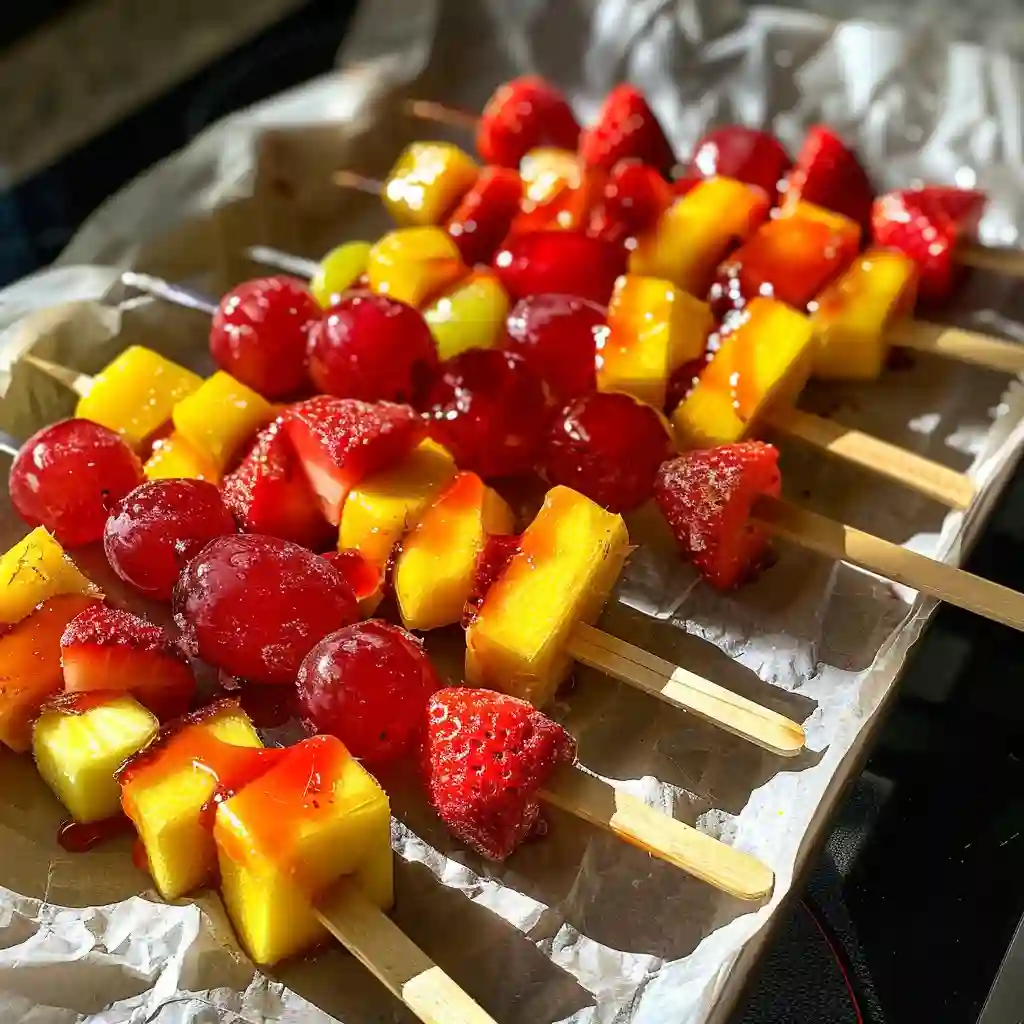
But here’s what that failure taught me:
- Dry everything: I now obsessively blot fruit with paper towels.
- Use a thermometer: 300°F is not a suggestion—it’s a requirement.
- Timing matters: From the moment the syrup is ready, you have a very short window to dip the fruit before it sets or thickens.
On my second try, I followed every step meticulously—and finally got that shiny crackle when I bit into a strawberry skewer. It was honestly one of the most satisfying moments I’ve had in my home kitchen.
Now, I make tanghulu whenever I want to impress guests with something eye-catching and unique. It’s also become my go-to treat when I’m craving something sweet, cold, and crunchy—especially in the summer.
Community Trends, Fails, and Laughs
Part of what makes the Tanghulu Challenge so enjoyable is how playful and experimental people get with it. I’ve seen some incredible and hilarious creations on social media:
- A friend of mine tried making Skittles-covered tanghulu—spoiler: it melted into a psychedelic puddle.
- Another user dipped bacon in sugar syrup. That one… let’s just say it was a “one-and-done” attempt.
- I even watched a video of someone coating marshmallows, which completely shriveled in the hot syrup and looked like sugar fossils.
But beyond the fails are some wildly inventive successes:
- Fruit kabobs with alternating berries and mint leaves
- Chocolate-drizzled tanghulu, which adds a creamy contrast to the hard shell
- Color-tinted syrup using natural food coloring for an extra wow factor
Tanghulu and the Global Dessert Culture
How Tanghulu Fits into the World of Viral Sweets
The Tanghulu Challenge isn’t just a passing TikTok trend—it’s part of a bigger shift in how people experience and share food around the world. I’ve watched traditional dishes, like Japanese mochi and Filipino ube treats, go viral overnight. Tanghulu is now proudly among them.
What makes tanghulu so captivating is its visual appeal and sensory payoff. That glassy, sugar-coated fruit isn’t just tasty—it’s an ASMR dream. From the dramatic dip in syrup to the iconic “crack” when you bite, it’s practically made for the digital age.
Its simplicity also allows for global adaptation. While traditional tanghulu uses hawthorn berries, the internet has opened the door to strawberries in California, grapes in Italy, even mango in the Philippines. It’s proof that with a little creativity, any culture can add its own spin.
I love watching these videos from creators across continents. It’s like seeing a conversation between cultures—told through candy.
Why Global Food Challenges Connect Us All
Food challenges like the tanghulu trend do more than entertain—they create community. Every viral recipe, every attempt (even the fails), adds to a growing digital recipe box where people from different backgrounds learn, laugh, and share their creations.
It’s this spirit that drew me to tanghulu in the first place. What began as a quiet street snack in Beijing is now a fun, shared experience on phones and kitchens across the globe. And that’s what I love most about cooking—it’s not just about eating. It’s about connection.
FAQ Section
What is the Tanghulu Challenge?
The Tanghulu Challenge is a viral social media trend where people create and showcase tanghulu—fruit skewers dipped in hot sugar syrup that hardens into a glossy, crunchy shell. The challenge lies in achieving the perfect sugar crack and capturing that moment on camera, usually with a dramatic bite and satisfying crunch. It’s inspired by a traditional Chinese street snack and has exploded in popularity thanks to platforms like TikTok and Instagram.
Why can’t you stir tanghulu?
Stirring the sugar syrup while it cooks causes crystallization, which ruins the smooth texture needed for a clear, crackly shell. Once sugar is dissolved and heating, stirring reintroduces air and encourages crystals to form. This leads to grainy syrup that won’t coat your fruit properly. For best results, leave the syrup alone and monitor the temperature with a candy thermometer.
How long do you leave tanghulu in an ice bath after?
Tanghulu skewers should be dipped in an ice bath for 20 to 30 seconds immediately after coating them in hot syrup. This rapid cooling hardens the sugar shell and gives it that iconic glassy crunch. Leaving them too long can cause moisture to seep in and ruin the texture, so be quick and precise.
What is the story behind tanghulu?
Tanghulu originated in China over 800 years ago, traditionally made with hawthorn berries. According to legend, a royal concubine was once cured of an illness by eating hawthorn dipped in syrup. It became a popular street snack, especially during festivals, and symbolized joy, prosperity, and unity. Today, tanghulu bridges past and present—its transformation into a viral challenge is a modern take on a rich culinary history.
